
Imagine stepping off the trail to take a photo of a unique wildflower when you suddenly feel a prick on your ankle. You look down to see the tail end of a snake slithering away. What just bit you? If you are not sure, you will probably want to get to a medical facility as soon as possible. Here in the United States, medical facilities and hospitals are equipped with antivenom. In other countries, especially in rural areas, there either are not any local medical facilities or none that carry antivenom. There is also a wide range of snakes that don’t have antivenom. Let’s take a look at 8 of the dangerous snakes that don’t have antivenom.
1) African Bush Viper

There is no antivenom for the African bush vipers. They live in rainforests in central and western
Africa
.
©Marina Yesina/Shutterstock.com
The African bush viper is a venomous snake found in the central and western countries of Africa. They are arboreal snakes, meaning they prefer to hang out in trees. These snakes live in tropical rainforests and do not come in contact with humans very often, which is good because there is no antivenom for the African bush viper. They can get to be 2 ½ feet long and are bright green, red, orange, or yellow. Their scales are spiky, giving them a dragon-like look.
In April of 2021, a zoo employee at the San Diego Zoo was accidentally bitten by an African bush viper. The victim was rushed to the nearest hospital for evaluation and medical care. The venom of the African bush is a hemotoxin, so it slows blood clotting, destroys red blood cells, and can cause tissue damage and internal bleeding. A later report stated that the worker was recovering at home and should make a full recovery. The severity of bites can depend on the age of the snake, the type of bite, and other factors.
2) Spiny Bush Viper
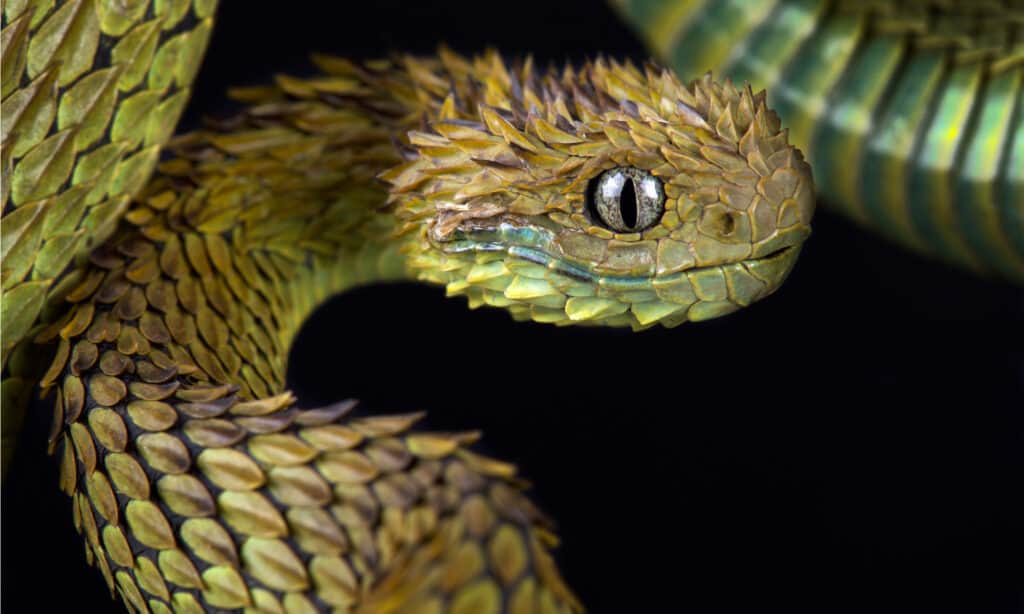
The spiny bush viper looks like a dragon.
©reptiles4all/Shutterstock.com
Similar to the African bush viper, the spiny viper is usually green with spiky scales that stick up. They can grow to be 2 feet to 2 ½ feet long and live mostly in trees. They can be found in the eastern and central countries of Africa in swamps, woodlands, and tropical rainforests. There is no antivenom for the spiny bush viper and their venom is a neurotoxin that can cause internal hemorrhaging of organs. Because the spiny bush viper lives in secluded areas, bites on humans are extremely rare.
3) Malayan Blue Coral snake
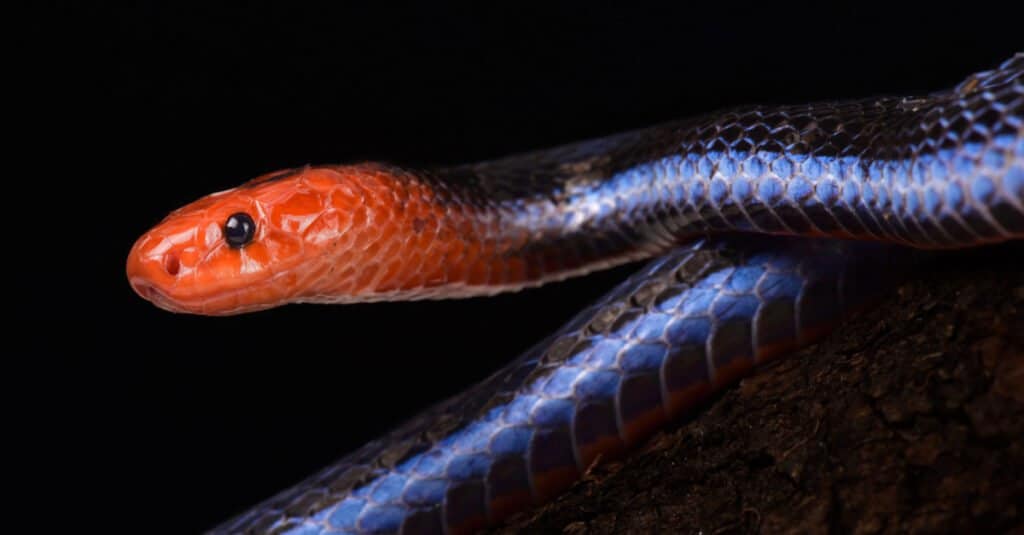
The Malayan blue coral snake has a unique coloration with a bright red head and tail and a dark blue back with bright blue side stripes.
©reptiles4all/Shutterstock.com
The Malayan blue coral Snake is a beautifully colored snake with a bright red head and tail, dark blue back, and bright blue side stripes. They are medium-bodied snakes that can grow up to six feet long. These snakes only live in South East Asia and their numbers are dwindling due to habitat loss. The venom of the blue coral snake acts fast and immediately produces a full-body spasm and paralysis. They have the longest venom glands of all snakes! Why do they need such potent venom? Because they eat highly venomous snakes like the king cobra. They need strong venom to paralyze and kill these other snakes.
4) Monocled cobra from West Bengal

Monocled cobras can grow to be 3-5 feet long.
©Ton Bangkeaw/Shutterstock.com
The problem with antivenom in India is that there is one generic antivenom used for almost all venomous snake bites. A recent study from the Indian Institute of Science showed that “the big four” antivenom, made from the venom of four of the most common venomous snakes in India, is not effective in all regions of the country. Studying the venom of different snakes from different regions showed new results that dictate the need for more specific antivenom.
The monocled cobra from the West Bengal area was found to have venom that was 3 times more neurotoxic than the common cobra. As a neurotoxin, it affects the nerve tissues of the victim. Cobras have a hood that they can expand making their head look much larger. The monocled ones have an O-shaped oval marking on the back of their hood. They are typically dark brown to black in color and can grow to be 3-5 feet long.
5) Monocled cobra from Arunachal Pradesh
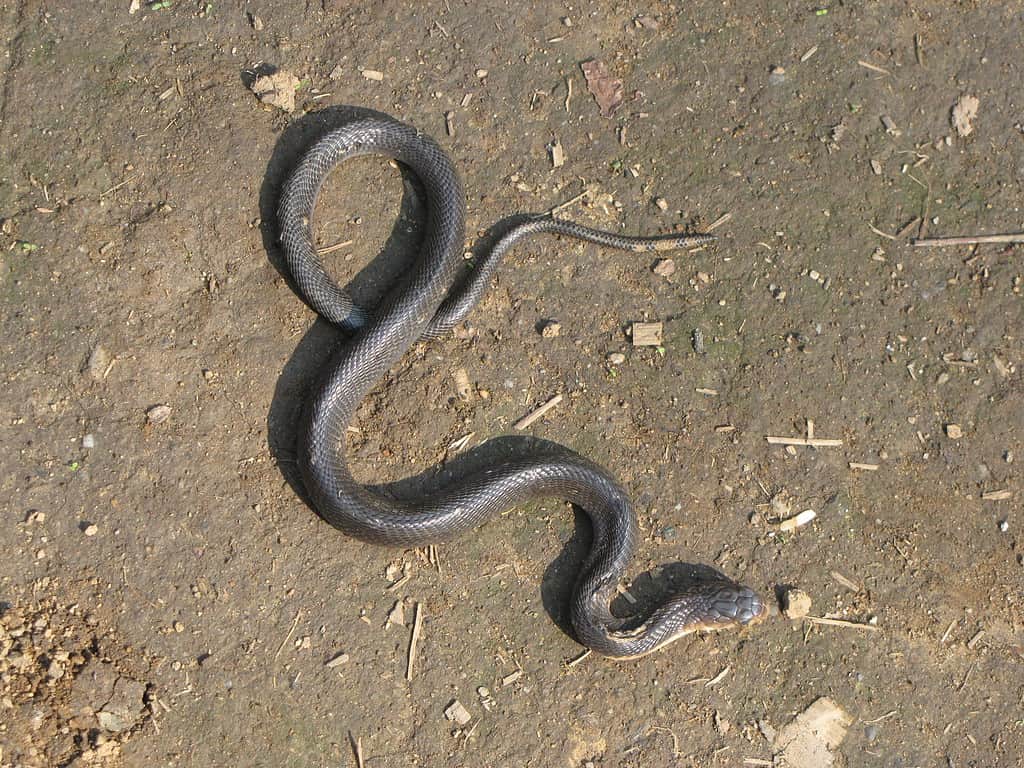
The venom of monocled cobras from Arunachal Pradesh is extremely cytotoxic.
©Rohit Naniwadekar / CC BY-SA 4.0 – License
The monocled cobra from the Arunachal Pradesh area in Northeastern India is another venomous snake that researchers studied. They found that the venom of these snakes was extremely cytotoxic with more than five times the cytotoxins found in the venom of the common cobra. Cytoxins affect the cells of the body and can lead to tissue necrosis leaving a large open sore. The problem with cobra bites like these is they can often leave a victim with life-long injuries, disfigurement, and disabilities.
6) Sind Krait

The Sind Krait species venom is 40 times more potent than the common cobra, and there is no antivenom.
©Arabindu Sardar/Shutterstock.com
The Sind Krait which lives in the western part of India is a venomous snake that belongs to the cobra family. Kraits (pronounced like “Krites” rhyming with kite) are land snakes that have 12 different species. They can be a variety of colors and grow to be 6 ½ feet long. They frequently live near humans, hence why there are a large number of snake-human conflicts with kraits. The most disturbing thing is that kraits will sneak into people’s homes, huts, and living quarters at night and bite people while they sleep!
Researchers found that Sind krait’s venom is 40 times more potent than that of the common cobra! Sind kraits are also common in rice patties which makes bites to rice patty workers more common as well.
7) Sochurek’s saw-scaled viper
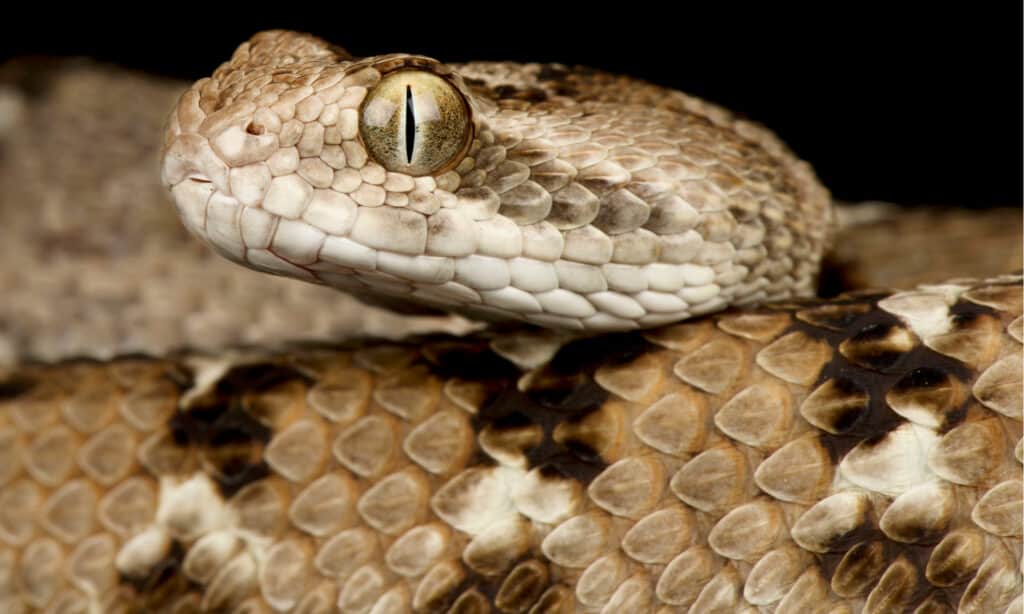
The saw-scaled viper has one of the highest bite rates in the world.
©reptiles4all/Shutterstock.com
A recent case of a snake breeder that was bitten by a Sochurek’s saw-scaled viper shows how there needs to be more specific antivenom created. There was not an antivenom specifically for Sochurek’s saw-scaled and the man needed 20 vials “to cease acute symptoms of systemic envenoming.”
Sochurek’s saw-scaled vipers are smaller snakes, about 1-3 feet in length. They are tan with dark brown markings and blotches. Saw-scaled vipers, in general, are believed to be responsible for the most snake bites in the world. In India, there were a total of 808,000 venomous snake bites reported between 2001-2014. The death rate was 4.8 per 100,000.
8) The African Twig Snake
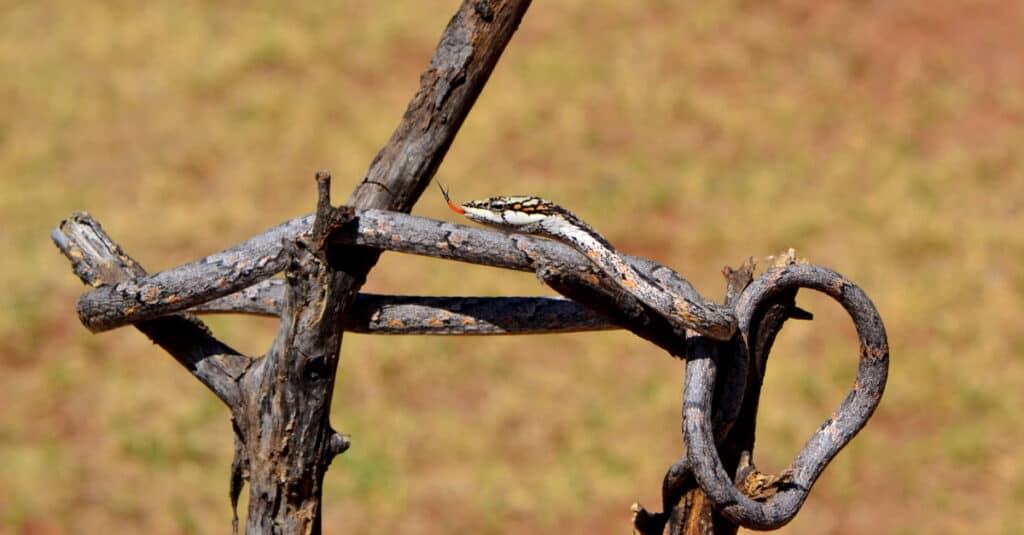
Twig snakes blend into their environment by looking like a twig. They can also puff their head up if they are threatened.
©Morne Carstens/Shutterstock.com
The African twig snake gets its name from its shape and coloration that makes it look like a twig. They are arboreal snakes, living in trees in South Africa and other southeastern African countries. Sometimes called the Southern Vine Snake, these snakes are very venomous, causing hemotoxic effects, including uncontrolled bleeding and decreased clotting abilities. They can get to be 48 inches long and have a long skinny body that looks like a twig. They have orange markings on either side of their head and can puff their head up when they feel threatened. Instead of cat-like eyes, they have a strange keyhole-shaped pupil. Don’t be surprised by their bright red tongue!
Summary of the 8 Snakes that Don’t Have Antivenom
Here’s a summary of the 8 snakes that don’t have antivenom and where they are located:
| Number | Snake | Location |
|---|---|---|
| 1 | African Bush Viper | Central and Western Africa |
| 2 | Spiny Bush Viper | Eastern and Southern Africa |
| 3 | Malayan Blue Coral snake | Southeast Asia |
| 4 | Monocled cobra from West Bengal | India |
| 5 | Monocled cobra from Arunachal Pradesh | Northeastern India |
| 6 | Sind Krait | India |
| 7 | Sochurek’s saw-scaled viper | India |
| 8 | African Twig Snake | South Africa and southeastern African countries |
The photo featured at the top of this post is © Mark_Kostich/Shutterstock.com
Discover the "Monster" Snake 5X Bigger than an Anaconda
Every day A-Z Animals sends out some of the most incredible facts in the world from our free newsletter. Want to discover the 10 most beautiful snakes in the world, a "snake island" where you're never more than 3 feet from danger, or a "monster" snake 5X larger than an anaconda? Then sign up right now and you'll start receiving our daily newsletter absolutely free.
Thank you for reading! Have some feedback for us? Contact the AZ Animals editorial team.






